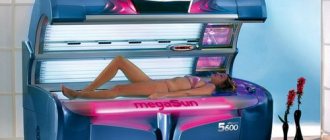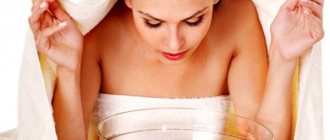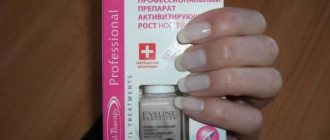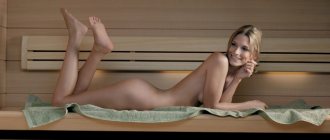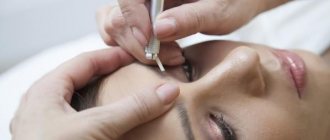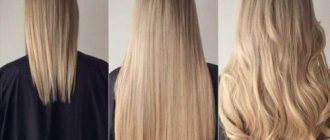Benefits of solarium:
- normalization of mental state and general well-being;
- relieving muscle tension;
- reducing the load on the nervous system, eliminating stress;
- help in the fight against depression, the appearance of which is associated with the change of season;
- accelerating the healing of wounds and scars, improving the appearance of the skin, including helping in the fight against acne, oiliness and psoriasis.
The main advantage of tanning in a solarium is the activation of many body systems, for example, respiratory, reproductive and endocrine.
The question of whether sunbathing in a solarium is harmful is a double-edged sword: on the one hand, there is a significant positive effect on human health, on the other hand, harmful ultraviolet radiation . But if the correct dosage is observed, this “helper” will not have a bad effect. However, if you do not take into account the characteristics of the body and neglect the maximum time spent under the lamps in the solarium, you can “earn” the following ailments:
- Having no idea about his own permissible limit of consumed rays, a person weakens his immune system.
- Ultraviolet rays, which cause tanning, are dangerous if used excessively, because in this case all the body’s forces are aimed at protecting against its effects.
- Getting sunburned can lead to cancer.
- Melanoma, a cancer that cannot be cured, can develop even from skin trauma in childhood caused by excessive sun exposure, and the appearance of these lesions in adulthood is likely to give rise to cancer.
Neglecting radiation affects fertility in women and can even cause short-term, lasting several days, infertility in men.
If you combine antibiotics and a solarium , the consequences can be fatal . Research has shown that some people may experience photosensitivity, or an atypical reaction to ultraviolet light.
This phenomenon in itself can be described as an allergy to a medicine. Its development occurs with the participation of the immune system: the drug molecules become a kind of haptens, or substances that are able to interact with antigens, but do not exhibit immunogenic properties when exposed to rays, which causes an allergic reaction, manifested in the form of necrosis, lupus erythematosus or other autoimmune diseases .
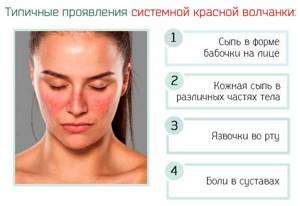
The main factor in choosing a particular salon providing this service should be certificates for lamps . The newer they are, the better, because “burnout” directly affects the result of the procedure: the consequences that old lamps in a solarium can cause include uneven tanning.
If the skin color has not changed at all after 2-3 sessions, then the device definitely contains old, already used emitters. But we should not forget that if the lamp has not yet worked for 20 hours after installation, then its radiation is much stronger, which means it is necessary to reduce the time spent inside the device.
Most experts agree that visiting a solarium during menstruation is contraindicated . The reason for this is sudden changes in a woman’s body: during menstruation, melanin, a pigment that protects the body from the harmful effects of ultraviolet rays on humans, is not produced, which is why a tan appears. Therefore, on critical days it is extremely difficult to get a beautiful skin tone.

The dangerous consequences of solarium also include the following:
- decreased hormone levels, which can lead to heavy bleeding;
- possible spasm of uterine vessels provoked by exposure to rays;
- ideal conditions for the development of inflammation when using tampons;
- possible dizziness if the woman suffers from hypertension.
Pregnancy is a categorical prohibition . This period is characterized by special changes in the hormonal system, which leads to increased sensitivity to harmful ultraviolet radiation. Pigment spots may appear on the mother's skin, which are almost impossible to remove.
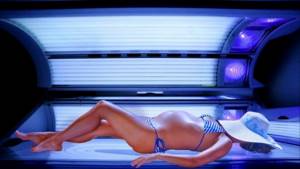
Contraindications to solarium:
- pregnancy;
- taking antibiotics, antidepressants, tranquilizers, contraceptives;
- Celtic type of appearance (white skin, blue eyes, freckles) and blond hair and/or eyes;
- diseases of the endocrine system, including the thyroid gland;
- exacerbation of chronic diseases of internal organs;
- a large number of moles on the body.
Read more in our article about the consequences of solarium.
The benefits of solarium
In winter, when the night is longer than the day, thoughts about visiting a solarium appear more and more often. Its principle of action is to produce ultraviolet rays, which are similar to those produced by the sun, and this leads to tanning. When used correctly, tanning in a solarium can do more good than harm.
For example, its help is to:
- Improve your mental state . Modern life is fast, which negatively affects a person’s mental health. By taking artificial sunbathing in a solarium, you can, if not avoid it, then greatly reduce the consequences of excessive activity.
- Relieve muscle tension . A visit to a solarium can improve the flow of all biological processes in the body, which, in turn, will have a positive effect on its overall well-being and restoration of the muscular skeleton.
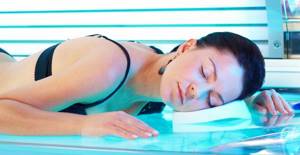
- Reduce the load on the nervous system , including relieving stress. It’s not difficult to imagine yourself on some island surrounded by water, and at least temporarily unload and get a boost of energy while being inside a device that gives a person an attractive appearance during a session in the solarium.
- Relieve depression , the appearance of which is associated with the change of season. It has long been proven that there is no better assistant than sunlight to lift your mood and improve the production of serotonin, the “hormone of joy,” the lack of which leads to neuroses, depression and simply stress on the central nervous system.
It is impossible not to recall such properties of UV radiation as accelerating the healing of wounds and scars, improving the appearance of the skin, including helping to combat acne, oiliness and psoriasis.
The main advantage of tanning in a solarium is the activation of many body systems, for example, respiratory, reproductive and endocrine.
We recommend reading the article about tanning during pregnancy. From it you will learn about the benefits of sunbathing for the expectant mother, contraindications, what should be taken into account when getting a tan, sunscreens during pregnancy and the possible consequences of tanning. And here is more information about whether a nursing mother can sunbathe.
Beneficial effects on the body
The benefits of solarium are no less known than the harm from UV rays. Even in ancient times, the practice of sun treatment was actively developed among the Greeks and Romans. They erected special structures for this process.
The key advantage of a solarium is the ability to quickly get a tan . UV rays begin to affect the cells of the epidermis. During this process, melanin is produced and the skin gradually darkens.
Tanning in a solarium allows you to achieve an even color and avoid marks from your swimsuit. It has been noticed that a bronze-colored body looks more attractive and more toned. In addition, any dress looks more impressive on a tanned body.
Sunbathing in a solarium is useful for improving metabolism. Ultraviolet light helps fight fatigue and stress. Therefore, when you leave the cabin, you feel invigorated and energized. It also helps prepare the skin before a seaside holiday. This helps reduce the chance of getting burned while on vacation.
Solarium provokes the accumulation of vitamin D in the body. Its deficiency leads to the appearance of certain diseases, including:
- cold,
- diseases of the joints and skin,
- rickets,
- psoriasis.
The opinion of doctors is that visiting a solarium is worth it for people with weakened immune systems, suffering from the blues and bad mood. However, this procedure should not be abused. After all, a solarium is not only a benefit, but also a harm, which is also important to learn more about.
Is it harmful to visit it and why?
The question of whether sunbathing in a solarium is harmful is a double-edged sword: on the one hand, it has a significant impact on human health, and on the other hand, harmful ultraviolet radiation. But you shouldn’t rush to get upset: if you follow the correct dosage, this “helper” will not have a bad effect. However, if you do not take into account the body’s characteristics and neglect the maximum time for spending under the lamps in a solarium, you can “earn” the following ailments:
- Having no idea about his own permissible limit of consumed rays, a person weakens his immune system.
- Ultraviolet rays, which cause tanning, are dangerous if used excessively, because in this case all the body’s forces are aimed at protecting against its effects.
- Getting sunburned can lead to cancer.
- Melanoma, an incurable malignant tumor, can develop even from skin trauma in childhood caused by excessive sun exposure, and the appearance of these lesions in adulthood is likely to be the onset of the disease, cancer.
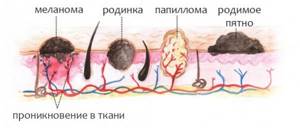
Neglecting radiation affects fertility in women and can even cause short-term, lasting several days, infertility in men. Is it dangerous to be on antibiotics?
Any instructions for the drug say in black and white that if you combine antibiotics and a solarium, the consequences can be fatal . This is explained by the fact that, according to research, some people may experience photosensitivity or an atypical reaction to ultraviolet radiation.
This phenomenon in itself can be described as an allergy to a medicine. Its development occurs with the participation of the immune system: drug molecules become a kind of haptens, or substances that are able to interact with antigens, but do not exhibit immunogenic properties, under the influence of rays, which causes an allergic reaction, manifested in the form of necrosis, lupus erythematosus or some other or other autoimmune diseases.
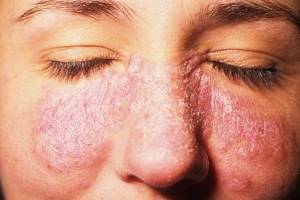
lupus erythematosus
Why does my skin itch after tanning?
Alas, dermatologists often hear the complaint from their patients: “I itch after tanning!” The itching sensation can cover the entire body or be localized. The spots may be persistent or go away on their own after a few days. Let's look at the dermatological problems that occur after tanning:
- Burn. Excessive exposure to tanning lamps on dry or UV-sensitive skin can cause burns. A person’s whole body itches after a solarium, there is a burning sensation and pain. You can get rid of these unpleasant symptoms with the help of a drug such as Panthenol, or creams with lanolin. A cool shower will also bring instant relief.
- Photodermatosis. What is it? This is the name for inflammation of the skin that occurs as a reaction to the rays of the sun, which is why the term “solar urticaria” is commonly used. People who already suffer from allergic reactions are prone to it. The causes are exogenous and endogenous factors. Exogenous, that is, external causes are cosmetics and perfumes, which, under the influence of heat and ultraviolet radiation, change their composition and become strong allergens. Endogenous, or internal causes of photodermatosis are disorders of protein metabolism in the body, autoimmune problems, chronic diseases of internal organs. Even a simple strawberry or orange can cause an allergy attack, not to mention taking medications the day before visiting a solarium. Photodermatosis is manifested by severe discomfort - not only irritation, but also damage to the skin, including blisters. It is important to treat it so that it does not turn into eczema.
- Fungus. A horizontal or vertical solarium may well become a source of the spread of fungal infection. The reason for this is poor compliance with sanitary standards by tanning studio employees. The infection usually concerns the toes, which is where the itching occurs, which leads beauty salon clients to a dermatologist.
- Scabies. This disease is nothing more than an infection by a microscopic mite. The itching intensifies in the evenings, because it is at this time that insects are especially active. Similar to fungal infections, scabies can also be attributed to poor tanning bed hygiene.
- Allergy. If, after a tanning bed, red spots appear and itch, then the cause of this may be an allergic reaction. It may also be accompanied by redness, rash, peeling, and pustules. Allergies appear due to the individual characteristics of the body in combination with exposure to the sun. As it should be for allergy sufferers, such reactions need to be relieved with the help of antihistamines.
Are old lamps in a solarium harmful?
The main factor in choosing a particular salon providing this service should be certificates for lamps. The newer they are, the better, because the “burnout” of the lamp directly affects the result of the procedure: the consequences that old lamps in a solarium can cause include uneven tanning.
If the skin color has not changed at all after 2-3 sessions, then the device definitely contains old, already used emitters. But we should not forget that if the lamp has not yet worked for 20 hours after installation, then its radiation is much stronger, which means it is necessary to reduce the time spent inside the device.
Watch the video about the dangers of solarium:
How to choose a solarium
And, nevertheless, the benefits and harms of artificial tanning continue to be a subject of debate. And therefore, you should approach the issue of choosing a solarium very responsibly, and it is equally important to adhere to measures. If you dream of a chocolate tan, then first you need to consult a doctor.
Those who have fair skin may be subject to burns, and it is not recommended to heat moles at all. And those who take antidepressants, antibiotics, painkillers or tranquilizers should not visit the solarium at all. These medications make the skin more sensitive and may therefore cause an allergic reaction.
It is better to choose salons where there are specialists who, taking into account your skin type, will create a special schedule and time for sunbathing for you. For example, for brown-haired women with dark skin, the tan is best perceived within 8 to 20 minutes. For brunettes who have dark skin and can tolerate tanning well, the session can last 10-30 minutes.
It is better for fair-haired and fair-skinned people to tan for no more than 5 to 15 minutes, because their skin is more prone to burns. But blondes who have pink skin are not recommended to sunbathe at all, as there is a risk of getting sunburned. The full list of people who should not use solarium can be found here
It is also important to find out how long ago the lamps were replaced and how often they do it. Because, being under a new lamp for a long time, there is a chance of getting burns, and one lamp can work up to 540 hours.
Is it possible to visit during pregnancy or during menstruation?
Most experts agree that visiting a solarium during menstruation is contraindicated. The reason for this is sudden changes in a woman’s body: during menstruation, melanin, a pigment that protects the body from the harmful effects of ultraviolet rays on humans, is not produced, which is why a tan appears. In other words, a menstruating girl simply won’t be able to get a decent tan.
The dangerous consequences of solarium also include the following:
- decreased hormone levels, which can lead to heavy bleeding;
- possible spasm of uterine vessels provoked by exposure to rays;
- ideal conditions for the development of inflammation when using tampons;
- possible dizziness if the woman suffers from hypertension.
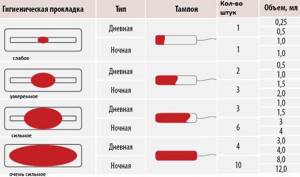
Pregnancy, unlike menstruation, is not a recommendation, but a categorical prohibition. The fact is that this period is characterized by special changes in the hormonal system, which leads to increased sensitivity to harmful ultraviolet radiation. Moreover, turning to the cosmetic aspect, age spots may appear on the mother’s skin, which are almost impossible to remove.
